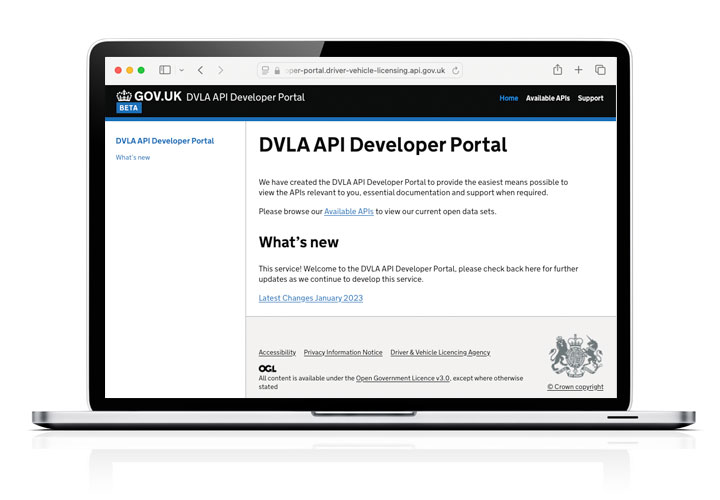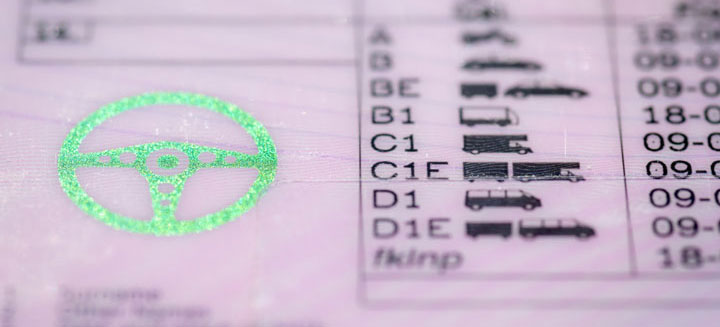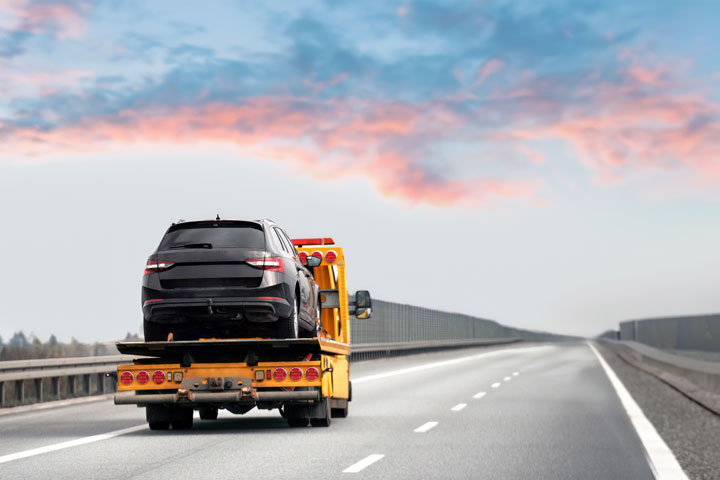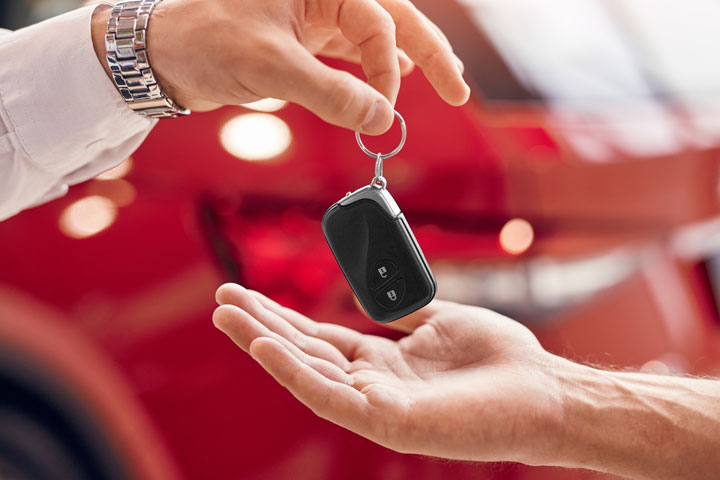
Portal development to interact in real time with the DVLA's Access to Driver Data (ADD) API
We have developed a portal to interact with the Gov.UK DVLA API to check the driving entitlement and endorsement record of drivers with out user intervention.
DVLA Data Access Conditions
Data is supplied by the DVLA on the explicit basis that it must not be used for identity checking of any kind and is only used to check entitlement to drive where there is a legitimate need to do so.
Website sends driving licence queries
The objective was to send automated queries from established vehicle hire platforms we have developed, responding to a customer online booking request.
The vehicle hire booking process includes the submission of the nominated driver's driving licence credentials which are cross referenced with DVLA vehicle categories encompassing the hire of a car, van, minibus, crew-van, light vehicles up to 3.5 tonnes gross vehicle weight (GVW) or Heavy Goods Vehicle (HGV) from 7.5 tonnes upwards.

The queries generated and communicated in a real-time server-to-browser session also include those that yield a response listing the date, description and penalty points accumulated for any endorsements on the licence.
Converts API Response into user friendly output
The responses to the queries is received is raw data in the format of JSON (JavaScript Object Notation) which we interpret and convert to display in a user friendly output.
The system development allows interaction with the cloud-hosted API to deliver results without any user intervention.
The DVLA sourced output will stipulate if the driver is entitled,or not, to drive the vehicle category.
Further data processing for compliance with Vehicle Hire Terms and Conditions.
However, the output will be further assessed for compliance with the vehicle hire company's published operating parameters, an example of which may be that the drivers age must fall into an age range i.e. 24 to 70 years or that the vehicle may only be hired by a company and under the company's business insurance i.e. in the instance of a 44 tonne sleeper truck.
Booking automatically qualified for acceptance or subject to conditions.
The crux of it all is that the system will automatically qualify the booking with either a confirmation of hire to the customer, or taking the examples above, issue an advisory, that to proceed with the booking an older/younger driver is a requirement and/ or that a company's own business insurance is a stipulation.
Grandfathers Rights
The DVLA output allows us to address other circumstances and process the booking accordingly.
This would for instance include "Grandfather Rights" which allows people who passed their driving test prior to 1997 to drive an HGV 7.5 ton vehicle on a normal driving license.
The driving category for this is C1 and covers vehicles from 3.5-7.5-tonnes GVW.
There are rules that govern these rights that generally revolve around if you are defined as driving a vehicle for "hire or reward" in which case you would need a get a professional driving qualification called the Driver Certificate of Professional Competence (CPC) to drive a Bus or an HGV for example.
However, if you did have "Grandfather Rights" and wanted to hire a 7.5 tonne truck to move house yourself, then it is legal.
Drivers who passed their car driving test from the date of 1 January 1997 would need to take a separate C1 test in order to drive any vehicle weighing in excess of 3.5 tonnes.
Pro's and Con's
Pro's
24/7 - Having no human intervention means that if you book a car at 3am you will get a response straight way.
In the instance of a vehicle hire confirmation, it represents peace of mind at 3 am; another job ticked off the customer's job list.
If the response indicates the vehicle hire is subject to certain conditions, then similarly you receive an advisory and are in the know straight away.
Automated Checks & Balances
Everything is recorded and all criteria has to be satisfied before vehicle allocation, including the vehicle registration number, is approved.
Data is used not only for the initial hire vetting, but also flags up licence validity, for instance license expiry, during the hire or when a vehicle hire extension is requested.
Safety and Compliance
These systems protect the customer in that they are always insured and thus, other road users in the event of an accident and similarly safeguards the hirer.
Return on Investment - ROI
Direct integration with the DVLA is preferable and a less costly option to utilising alternative providers: Economics with no compromise prevails every time.

Con's
One might adopt a luddite mentality as licence checking can be done manually, but it is a tedious and mundane task, that could be subject to error.
The downsides are if the API service becomes unavailable in which case, the fallback is to do it manually and utilise share codes.
